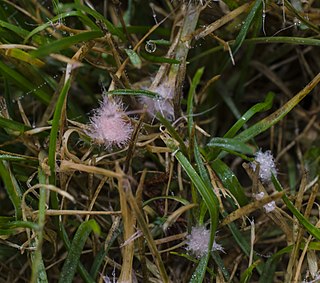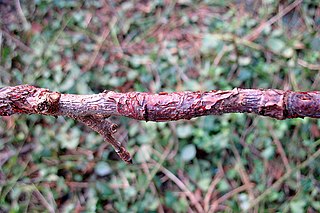
The Hypocreales are an order of fungi within the class Sordariomycetes. In 2008, it was estimated that it contained some 237 genera, and 2647 species in seven families. Since then, a considerable number of further taxa have been identified, including an additional family, the Stachybotryaceae. Wijayawardene et al. in 2020 added more families and genera to the order. According to the Catalog of Life, As of April 2021 the Hypocreales contains 6 families, 137 genera, and 1411 species. Hyde et al. (2020a) listed 14 families under Hypocreales, while, Wijayawardene et al. (2022) accepted 15 families in the order, where Cylindriaceae was additionally added. Earlier, Hyde et al. (2020a) had placed Cylindriaceae in class Xylariomycetidae. Samarakoon et al. (2022) agreed. Hence, Cylindriaceae should have been excluded from Hypocreales and placed in Xylariomycetidae. Xiao et al. (2022) recently introduced a new family Polycephalomycetaceae to Hypocreales.

The Nectriaceae comprise a family of fungi in the order Hypocreales. It was circumscribed by brothers Charles and Louis René Tulasne in 1865. In 2020, an Outline of fungi was produced and listed 70 genera and about 1,336 species.

Stachybotrys is a genus of molds, hyphomycetes or asexually reproducing, filamentous fungi, now placed in the family Stachybotryaceae. The genus was erected by August Carl Joseph Corda in 1837. Historically, it was considered closely related to the genus Memnoniella, because the spores are produced in slimy heads rather than in dry chains. Recently, the synonymy of the two genera is generally accepted. Most Stachybotrys species inhabit materials rich in cellulose. The genus has a widespread distribution and contained about 50 species in 2008. There are 88 records of Stachybotrys on Species Fungorum, of which 33 species have DNA sequence data in GenBank. Species in the genus are commonly found in soil, plant litter and air and a few species have been found from damp paper, cotton, linen, cellulose-based building materials water-damaged indoor buildings, and air ducts from both aquatic and terrestrial habitats.

Microdochium is a genus of ascomycete fungi, which contains several plant pathogens. The teleomorph is Monographella. The genus was circumscribed by German mycologist Hans Sydow in 1924.

The Bionectriaceae are a family of fungi in the order Hypocreales. A 2008 estimate places 35 genera and 281 species in the family. Species in the family tend to grow on plant material, including woody debris, while some species associate with algae, bryophytes, or other fungi.

Lasionectria is a genus of fungi in the class Sordariomycetes. It consisted of six species in 2008, and 16 in 2023.
Protocreopsis is a genus of fungi in the class Sordariomycetes. It consisted of nine species in 2008, and up to 11 species in 2023.

Corallomycetella is a genus of ascomycete fungi in the family Nectriaceae. Species of Corallomycetella are tropical, and are characterized by the formation of brightly colored rhizomorphs of their rhizostilbella-like asexual morphs. These fungi causes a number of plant diseases including 'violet root rot' of Theobroma cacao, root rot of Carica papaya, and 'stinking root disease' of several tropical woody plants. Two species of Corallomycetella are recognized: Corallomycetella elegans C. Herrera & P. Chaverri and Corallomycetella repens Rossman & Samuels. Corallomycetella jatrophae is now classified under Corallonectria.

Cosmospora is a genus of ascomycete fungi in the family Nectriaceae. The genus, as circumscribed by Rossman et al. (1998), included all the nectrioid species with small, reddish, non-ornamented sexual fruiting bodies that collapse laterally when dry. However, the genus was shown to be polyphyletic, and the majority of species were re-classified into revived or recently established genera that are monophyletic. Cosmosporasensu Rossman housed members of the following genera: Chaetopsina, Cylindrocladiella, Fusicolla, Macroconia, Mariannaea, Microcera, Pseudocosmospora, Stylonectria, and Volutella. Cosmospora was restricted to species having acremonium-like asexual morphs that grow on polypores and xylariaceous fungi by Gräfenhan in 2011. About 20 species are accepted in the genus.

Neonectria is a genus of fungi in the family Nectriaceae.
Seimatosporium is a fungus genus within the family Sporocadaceae.

Glomerellales is an order of ascomycetous fungi within the subclass Hypocreomycetidae (Sordariomycetes). The order includes saprobes, endophytes and pathogens on plants, animals and other fungi with representatives found all over the world in varying habitats.
Clonostachys is a genus of fungi in the order Hypocreales and family Bionectriaceae.

Mariannaea elegans an anamorphic fungus. It is mainly found on rotting wood and soil. M. elegans is not pathogenic to humans, animals, or plants.

Volutella is a genus of fungi belonging to the family Nectriaceae.
Cyanonectria is a genus of fungi belonging to the family Nectriaceae.

Dictyosporium is the type genus of fungi belonging to the family Dictyosporiaceae. By an estimate in 2018 it is formed by 45 species.

Stilbella is a genus of fungi in the order Hypocreales. The relationship of this taxon to other taxa within the order is unknown, and it has not yet been placed with certainty into any family. It is sometimes placed in the family Bionectriaceae.
Microcera is a genus of Ascomycete fungi in the Nectriaceae family.
Conioscypha is a genus of terrestrial and freshwater fungi in the monotypic family Conioscyphaceae and the monotypic order Conioscyphales. They are found on decayed wood, leaves, or bamboo stems. Except for Conioscypha japonica which was isolated from dog skin fragments and hair in 2017.














